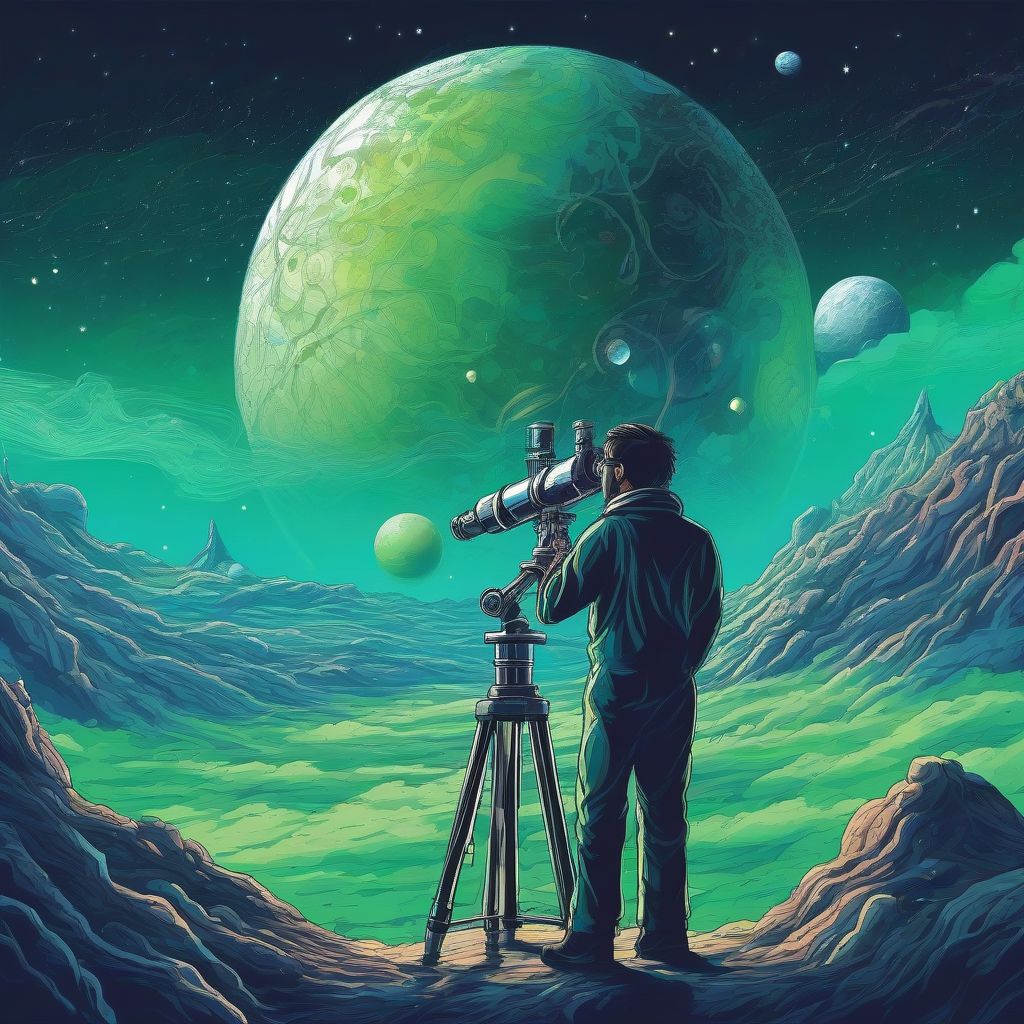Imagine gazing up at the night sky, peppered with countless stars, and wondering, “Are we alone?” This age-old question drives scientists to search for signs of life beyond Earth, a quest that hinges on finding biosignatures. But how exactly do scientists search for these subtle whispers of life in the vastness of space?
What are Biosignatures?
Biosignatures are any substance, element, or phenomenon that provides scientific evidence of past or present life. They can range from simple molecules like oxygen and methane to complex organic compounds or even technological artifacts like radio waves. Essentially, they are clues that could indicate the presence of life, even if that life is vastly different from what we know on Earth.
Different Types of Biosignatures
Scientists categorize biosignatures into several types, including:
- Gaseous biosignatures: These are gases in a planet’s atmosphere that could be produced by living organisms. Oxygen, methane, nitrous oxide, and even ozone are prime examples.
- Surface biosignatures: These are features on a planet’s surface that suggest biological activity. Examples include fossilized microbial mats, peculiar rock formations shaped by life, or even large-scale vegetation patterns.
- Temporal biosignatures: These are changes in a planet’s environment over time that could be indicative of life. For example, seasonal variations in atmospheric gases could be a sign of biological cycles.
- Technsignatures: These are signs of advanced extraterrestrial civilizations, such as radio signals, megastructures, or industrial pollutants.
How Scientists Search for Biosignatures
The search for biosignatures is a multi-faceted endeavor that employs a variety of techniques:
Telescopes: Eyes on the Cosmos
Telescopes are our primary tools for studying distant planets and their atmospheres. Powerful ground-based telescopes and space-based observatories like the James Webb Space Telescope can analyze the light passing through a planet’s atmosphere, revealing its composition. By looking for specific absorption or emission lines associated with biosignature gases, scientists can infer the presence of these molecules.
Spectroscopy: Deciphering the Light
Spectroscopy is the technique used to analyze the light from distant objects. It involves separating light into its component wavelengths, much like a prism separates sunlight into a rainbow. By studying the specific wavelengths absorbed or emitted by a planet’s atmosphere, scientists can identify the presence of various molecules, including potential biosignatures.
Sample Return Missions: Bringing Pieces of the Puzzle Back to Earth
Missions like the Mars Sample Return campaign aim to bring samples of Martian rock and soil back to Earth for detailed analysis. These samples can be studied in sophisticated laboratories, allowing scientists to search for microscopic fossils, organic molecules, and other evidence of past or present life.
Rovers and Landers: Exploring Alien Worlds Up Close
Rovers like Curiosity and Perseverance on Mars are equipped with instruments that can analyze the chemical and mineralogical composition of rocks and soil. These analyses can help identify potential biosignatures and provide insights into the planet’s past habitability.
Studying Extremophiles on Earth: Clues from Our Own Backyard
Scientists study extremophiles, organisms that thrive in extreme environments on Earth, to understand how life might adapt to harsh conditions on other planets. This knowledge helps them identify potential habitats for extraterrestrial life and develop strategies for searching for biosignatures in those environments.
Challenges and Future Directions
The search for biosignatures is not without its challenges. False positives, where non-biological processes mimic biosignatures, are a significant concern. For example, geological processes can produce methane, which could be mistaken for a biological product. Furthermore, detecting faint biosignatures on distant planets requires incredibly sensitive instruments and advanced data analysis techniques.
Despite these challenges, the future of biosignature research is bright. The James Webb Space Telescope, with its unprecedented sensitivity, is poised to revolutionize our ability to study exoplanet atmospheres. New missions to icy moons like Europa and Enceladus, which harbor subsurface oceans, could reveal signs of life in our own solar system. And advancements in laboratory techniques and data analysis are constantly improving our ability to detect and interpret biosignatures.
 Searching for Biosignatures in Space
Searching for Biosignatures in Space
Conclusion
The search for biosignatures is a testament to humanity’s insatiable curiosity and our desire to understand our place in the universe. While we haven’t yet found definitive proof of extraterrestrial life, the ongoing research and technological advancements are bringing us closer than ever to answering the question, “Are we alone?” The quest for biosignatures is a journey of discovery, and with each new finding, we gain a deeper understanding of the potential for life beyond Earth. What do you think about the possibility of life beyond our planet? Share your thoughts in the comments below, and let’s continue the conversation!



